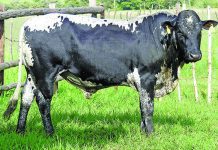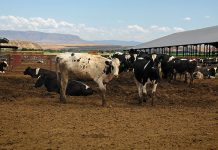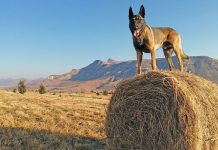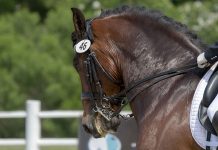Known to many as a legendary world waveski champion, Kola le Roux is perhaps less well-known as a highly accomplished bee farmer. Having started out in his suburban backyard, today he manages a premier honey brand produced from hives spread out across the Eastern Cape.
Understanding bees
“Watch that bee coming in like a B52 low on fuel over that flower,” says bee farmer Kola le Roux. “It’s going to land and pick up more fuel to be able to make the trip back to the hive. “All worker bees have flight plans. Carrying heavy loads, they have to be constantly aware of the distance back to the hive, shifts in wind patterns and even temperature variances. Their loads are so intense they actually die from mechanical failure – their wings have a certain amount of flying hours and they’ll fly until they collapse. This often happens during flight.”
Inside the hive, the queen’s production outputs are crucial. “The queen controls the hive. If she’s lazy, you’ll have poor production,” explains Kola. “She needs the leadership skills to drive the workers, she must be a dictator to ensure enough honey to survive the winter and be a good mother.”
- Hives across the Eastern Cape mitigate an uncertain climate.
- The bees collect nectar from wildflowers and drogie bush, which gives the honey a distinctive flavour.
- You need to be passionate to work with bees.
- Known to many as a legendary world waveski champion, Kola le Roux is perhaps less well-known as a highly accomplished bee farmer. Having started out in his suburban backyard, today he manages a premier honey brand produced from hives spread out across the Eastern Cape. Orrock Robertson visited this local legend on his Macleantown farm and discovered why climate is everything and African honey bees are best.
“My father used to buy me boxes of bees as birthday presents,” recalls Eastern Cape beekeeper Jacobus Johannes “Kola” Le Roux. “It’s always been something of a family tradition.” Before he really got started with his bees, Kola first built up the nationally renowned Kolaski Waveski brand and is reputed to have single-handedly developed the waveski. But the love of bees never left him and he couldn’t resist keeping a few hives in his suburban backyard.
But it was a farming experiment destined to go horribly wrong… One day his hives were infuriated by the smell of a freshly mown lawn and poured into the surrounding suburb. People literally ran for their lives. “Needless to say, I needed to find a place for me and my bees out of town,“ Kola smiles. Today his farm Elangeni near Macleantown, some 40km from East London, is the centre of a honey enterprise spread across the province.
The vagaries of nature
South Africa remains a nett importer of honey, with some local producers blending local honey with Chinese and Argentinian imports to boost stocks. Kola’s opinion is unambiguous. “This imported honey is absolute rubbish!” With an annual production of 11t to 14t honey, Kola Honey is a household name throughout the Border region, but Kola doesn’t like to talk about the size of his operation. “Nobody, besides me, knows how many bees there are, but it’s a lot,” he says. In bee farming, however, it’s not numbers that count, but climate. “In 2003, for example, we didn’t even produce 1kg of honey,” he recalls. “The rain came too late, in December, so the bees started producing late in response to late flowering. And then you can’t harvest all their honey, because they need some to survive on during winter.” If it doesn’t rain in November, there’s simply no honey.
To manage an unpredictable climate, Kola strung hives out across the province, from Port Elizabeth to Aliwal North and back to East London. “Weather varies greatly between regions,” he explains. “Sometimes just 50km away, they’ll have an inch more rain than us, affecting the timing of flowering. I wouldn’t be able to produce honey sustainably just off one location.”
Bush flowers: a cash crop
In the same way livestock farmers are actually grass farmers, Kola is actually a flower farmer. “Our bees collect nectar from flowers nature has provided, with no commercial nectar source. They don’t collect from cash crops, so my honey is chemical-free. But this means I’m completely at nature’s mercy.” Unlike other farms in the Macleantown area, where fighting off bush encroachment is a constant battle, the spread of indigenous bush and its flowers is encouraged on Elangeni – especially drogie bush (Scutia myrtina).
“I want to cry when I see farmers flattening drogie bushes,” says Kola. “They’re my ultimate cash crop, high in both pollen and nectar and unlike most plants that produce only one or the other. While nectar produces honey, pollen ensures the plant is propagated and provides a protein mix for the young bee grubs in the hive.”
Drogie bush nectar provides a milky smooth, deliciously sweet flavour – a trademark of Kola’s Honey. “If I run out of drogie honey, I have to clearly state so on the bottles or I get complaints,” Kola says.
Ironically, the nearby former Transkei, an area not really know for agricultural production, is one of the few places honey can be produced during the notoriously lean winters, thanks to eucalyptus plantations. “Eucalyptus flowers in winter, usually June and July, and we’re exploring production there,” says Kola. “We’re already in talks with the agriculture department. This will let us have year-round production, but in the meantime, our honey is solely a summer crop with high-risk margins.”
Vandalism and moths
Besides the climate, vandalism is Kola’s biggest threat. “My hives are constantly being robbed. Traditional beer, iQhilika, is produced from the grubs in the hive cells. The honey helps the fermentation process and increases alcohol volumes.”
Varroa mite and wax moths also pose risks. In Europe, the mites lay their eggs on the cap of the drone grub cell and the hatchlings eat the grubs. Fortunately in South Africa, drone grubs hatch a day earlier, disrupting the mites’ lifecycle. “The mites have faded out naturally,” explains Kola.
But the wax moth is a bigger problem – it attacks hives in winter when bee populations are low and most combs aren’t being used. “It lays its eggs in the vacant combs, which hatch as small worms that destroy the hives. If left unchecked, the bees will vacate the hive,” says Kola.
Self-sufficiency in the supply chain
One of the reasons for the success of Kola’s honey is a very short supply chain. “We do everything ourselves,” Kola says. “We make our own boxes and comb holders, distribute our own boxes and do our own honey collection, processing, bottling and marketing. In addition, we manage bee spread widely over the province. It’s hard work and one needs a fairly big labour force. “
“Honey being a summer crop increases the pressure of collection and getting the timing right, but as it can be stored for up to two years, hopefully the good seasons will cover the bad.” Kola advises anyone wanting to farm with bees to make absolutely sure it’s what they want to do. “You have to love bees to enjoy this business. When you’re wearing two overalls and gumboots on a 30ºC day with bees stinging the hell out of you, it’s only the love of what you do that keeps you going.” |fw








